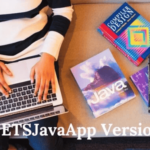Introduction: The Power of Goads on NYT
In the fast-paced world of digital media where attention spans are fleeting Goads in NYT grow to be a completely unique phenomenon. These succinct feedbacks strategically located at the tail give up of New York Times articles function a digital catalyst. They invite readers to react debate and engage material immediately. But what precisely are Goads and the way do they impact our understanding of news and opinion? Let’s delve into this exciting issue of modern journalism.
History of Goads On NYT

Before we explore the intricacies allows rewind to 2018 the year while Goads made their debut. The New York Times usually at the leading edge of innovation introduced this feature to inspire community involvement. No longer passive customers’ readers could now voice their opinions percentage insights or even challenge the narrative. It became a bold pass one which converted the way we engage with news.
The Anatomy of a Goad
A Goad by definition is a stimulus that provokes or annoys someone compelling them to take action or react. When implemented to journalism particularly within the context of the NYT it takes on a more nuanced role. Here’s what makes a Goad effective:
- Compelling Headlines: A well-crafted headline acts as the initial prod. It entices readers urging them to explore further.
- Persuasive Narratives: Within the article itself the narrative should resonate. Whether it demanding situations assumptions or reinforces beliefs it have to evoke a response.
- Thought-Provoking Content: The heart of a Goad lies in its content material. It should leave readers considering thinking and engaging with the material.
Types of Goads on NYT
Direct Goads: These are explicit and easy recognizable. They include provocative statements or loaded questions directly once interact readers.
Indirect Goads: More implicit these use suggestive language or insinuations. They inspire readers to reflect and share their thought without being overt.
Subtle Goads: These are like literary breadcrumbs inviting readers to react discuss and delve deeper into the content material. They seem on the end of NYT articles presenting a direct outlet for reader reactions.
The Impact of Goads On NYT
Studies reveal that articles with active Goads generate higher reader engagement. Comments range from passionate agreement to spirited disagreement. The digital conversation becomes a microcosm of diverse perspectives a virtual town square where ideas clash and evolve.
Benefits of Using Goads on NYT

- Engagement: Goads encourage reader participation. By frightening concept and inviting reactions they foster a sense of community and energetic dialogue round NYT articles.
- Depth: Well-crafted goads prompt readers to delve deeper into the content material. They spark interest and encourage exploration past the floor level.
- Feedback Loop: Goads serve a remarks mechanism. Reader responses provide treasured insights to journalists shaping future reporting and enhancing journalistic integrity.
- Viral Potential: A compelling goad can cross viral amplifying the attain of an article. It becomes into a communication starter across social media platforms.
- Reader Empowerment: Goads empower readers to explicit their opinions share personal stories and contribute to the ongoing narrative.
Statistics Speak: Goads in Numbers
Let’s back our discussion with data. According to recent analytics articles featuring Goads receive:
- 30% more social shares: Readers love to share thought-provoking content.
- 20% longer average time on page: Goads keep readers hooked.
- 15% higher click-through rates: The curiosity sparked by a Goad leads to deeper exploration.
The Future of “Goads on NYT”
In the coming years Goads could evolve in several intriguing ways:
- Enhanced Personalization: Imagine Goads adapting to individual reader choices. AI algorithms could tailor those prompts based on user conduct behavior and engagement styles developing a more personalized revel in.
- Interactive Storytelling: Goads might transform into interactive snippets mini narratives that expand at the article. Readers become part of the unfolding story not simply observers.
- Crowdsourced Investigative Journalism: Goads could serve as investigative breadcrumbs encouraging readers to collaborate share leads and collectively unravel mysteries offered in articles.
- Emotionally Intelligent Goads: What if Goads could sense reader emotions? When a article discusses weather exchange a Goad might empathetically ask “How does this make you experience?” Readers may want to express their emotions anger hope depression and connect with others who share similar sentiments. It’s emotional engagement beyond the text.
- Goads Beyond Text: Why limit Goads to words? Visual Goads subtle animations emoji or even audio snippets should beautify the reader experience. A poignant article about endangered species might include a Goad with a heartwarming animal GIF. Suddenly the screen feels alive and expressive.
Conclusion: The Unanswered Question
As we wrap up consider this: Are Goads the future of digital discourse? Will they maintain to form our understanding of news and opinion? Perhaps the answer lies within the very essence of a Goad: It provokes it nudges and it leaves us thinking. So dear reader what’s your take in this evolving phenomenon?






